The Centrality of Chinggis Khan in The Mongol National Conciousness
Mongolia is a landlocked state in East Asia, whose foreign policy had been explored in a previous article. That article briefly mentioned…
Mongolia is a landlocked state in East Asia, whose foreign policy had been explored in a previous article. That article briefly mentioned Temüjin, better known as Chinggis Khan. This article aims to explore the importance that Chinggis Khan holds in the Mongol National Consciousness.
In the 12th Century, somewhere in the vast steppes of Mongolia, along the banks of the river Onon, a baby boy was born to Yesügei, a member of a Royal Mongol family. This baby was said to have been born holding a blood clot in his hand — an auspicious sign, according to Mongol tradition. The baby was named Temüjin, but he would be known throughout the world by the title of ‘Genghis Khan’. Since his direct transliteration from the Mongolian language is Chinggis Khan, that is how he will be referred to as.
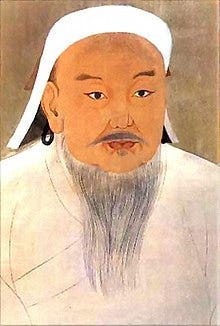
Today, The Khan has acquired near-Godlike stature in his Native Land of Mongolia. He has been deified by the Mongol Nation. Several monuments, parks and Ulaanbaatar’s new airport, The Chinggis Khan International Airport, are all named after him. Singers from all Mongol genres have composed songs named after him. For example, Batzorig Vaanchig, who is a Mongolian Throat Singer, and had a cameo in the Netflix series Marco Polo, garnered nearly 22 million views on his music video titled “Chinggis Khaanii Magtaal” — (transl. “In praise of Chinggis Khan”) whilst playing a morin khur, that is, a horsehead fiddle. This is a traditional Mongol musical instrument. Similarly, The HU, which is a Mongolian Folk Rock Band, has a sing titled “The Great Chinggis Khan”.
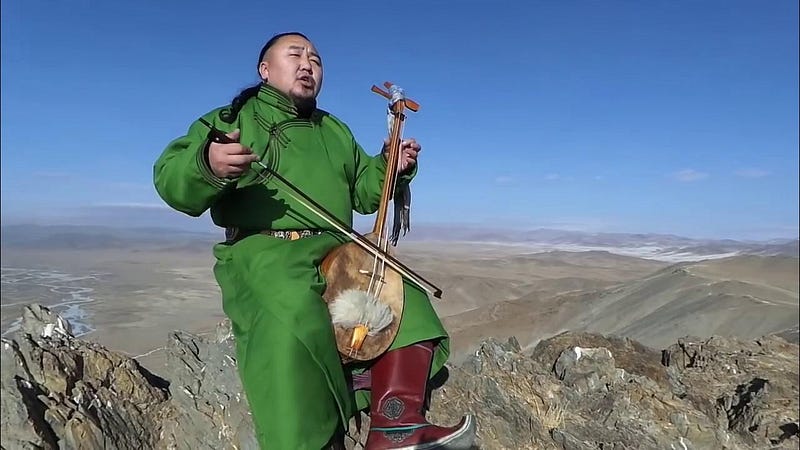
What has caused this deification of The Khan by the Mongol Nation? There are several reasons for this. Chinggis Khan founded the largest contiguous land Empire on the planet. By itself, this is not a sufficient enough explanation. It is important to look at the life of The Khan to understand how he became such a revered figure.
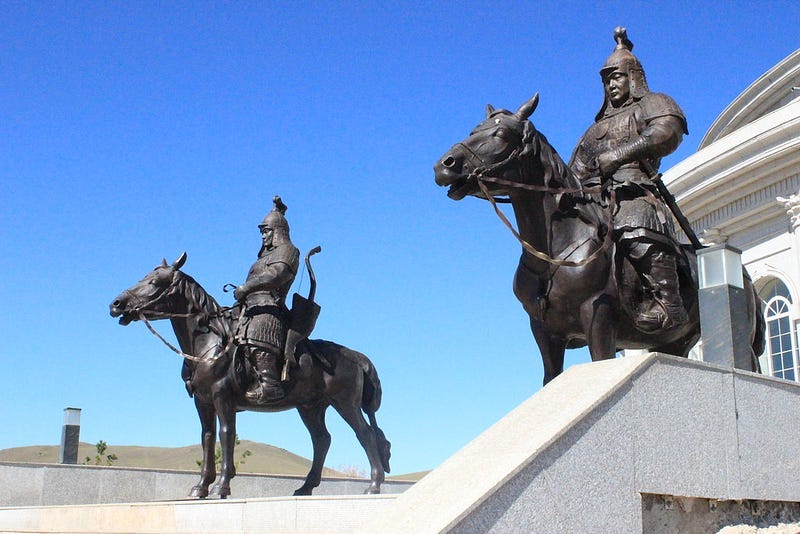
The Life of Chinggis Khan
His birth and Early Life:
Temüjin was born to Yesügei and his principal wife Hö’elün (whom Yesügei had abducted from her Merkit bridegroom). He was named so, since Yesügei had returned from a campaign against the Tatars where he killed a warrior called Temüjin Uge. Since he had returned just after the birth of his son, he named the boy Temüjin. Temüjin belonged to the Borjigin clan of the Mongols, and grew up along the bank of the River Onon at his father’s chief camp, where he trained for archery and horse-riding along with his siblings and other young children from his tribe. At the age of 9, his father was poisoned by the Tatars. This left the family vulnerable and alone. It was a devastating blow to to the rest of the family. The unity formed by the clans under his leadership shattered. The tribe abandoned them and left the for dead.
However, Hö’elün was a tough woman, and saved her family, finding whatever she could to feed her family. Assisting his mother by hunting animals using improvised weapons hardened the young boy like nothing else could. It shaped up his character and played a vital role in his core beliefs of life. He also had a natural affinity to build alliances and form strong bonds with trusted kin, rather than solely relying on familial and tribal affinities.
One of the alliances of kinship he built was with a boy named Jamukha. Jamukha belonged to the Jadaran clan, distantly related to Yesügei. The two boys hunted together, fished, played games, and honed their skills together, building a very deep friendship in the process. They swore an oath of eternal brotherhood based on Mongol tradition (called anda in Mongol). As a part of the oath ceremony, they swallowed a little bit of each others’ blood. This alliance would be crucial to Temüjin’s rise to power later on in life, and eventually turn into a major obstacle.
2. Marriage and Early Power Struggles:
However, personal and tribal conflicts soon emerged. Temüjin married Börte, the daughter of an Onggirat chieftain named Dei Sechen. Their marriage had been agreed upon right before Yesugei’s poisoning, and he was happy to find out that she had waited for him all these years. As per tradition, Börte was supposed to gift something valuable to Temüjin’ parents. Since his father had passed, the two decided to present the gift, a coat of the most-prized black sable fur to Ong Khan, who had taken the eternal brotherhood oath with Yesugei. Temüjin’s life took another dramatic turn when Borte was kidnapped by the rival Merkit tribe. He reaslized that he could not just live life as an outcast, at the mercy of warriors who could raid and pillage his encampment. He would have to carve out his own place in the hierarchy of Steppe Warriors, and boy did he succeed in that.

Desperate to rescue his, Temüjin appealed to both Ong Khan, the leader of the Kereit tribe, and Jamukha for assistance. The successful rescue of Börte not only solidified Temüjin’s reputation as a determined leader but also began to strain his relationship with Jamukha, who grew wary of Temujin’s rising influence.
By 1181, the once-close bond between Temüjin and Jamukha had deteriorated. While Jamukha adhered to traditional notions of noble superiority, Temüjin rejected any notion of subordination. The next 25 years saw the two embroiled in a bitter power struggle. The tension culminated in 1187 when Jamukha decisively defeated Temüjin in battle. Despite the defeat, Temüjin was undeterred. He learned valuable lessons from this loss, adapting his strategies and refining his approach to leadership.
The Final Ascendancy and the Quest to Unite all Mongols.
In the years after this defeat, Temüjin doubled down on building a loyal and formidable following. He restructured the Mongol military, organizing his forces not by tribal lines but by a system that valued merit and loyalty. This reorganization fostered unity among his followers, setting the stage for his future conquests. His power had grown substantially, but so had the animosity from his rivals. In 1201, Jamukha, determined to reassert his dominance, declared himself Gur Khan, a title meaning “universal ruler,” and rallied a coalition of tribes against Temüjin. The conflict was intense, but Temüjin’s strategic acumen once again proved superior. He emerged victorious, further weakening Jamukha’s influence and consolidating his own power.
One of the final obstacles in Temüjin’s path to supremacy was his former ally, Ong Khan. Once a trusted supporter, Ong Khan feared Temüjin’s increasing. In 1203, fearing Temüjin’s growing influence, Ong Khan plotted his assassination. However, Temüjin, ever the strategist, caught whiff of the betrayal and struck first. In a series of brilliantly executed maneuvers, he defeated Ong Khan’s forces, ultimately absorbing his tribe into his own. He employed all sorts of tactics for this, such as army units that were composed of people from all different tribes, misinformation, and propaganda to demoralize Ong Khan’s forces and rally his own.
With the fall of Ong Khan, Temüjin’s position was unchallenged. In 1206, he convened a khurultai, a grand assembly of Mongol leaders. It was at this assembly that Temujin was proclaimed Chinggis Khan, a title that means “Universal Ruler.” ‘Chin’ in Mongol means strong, firm, unshakable, and fearless. It is also close to the Mongolian word for wolf, chino, the ancestor from whom they claimed descent. With this Khuriltai, all Mongols, irrespective of tribe, lineage and religion. From here on, His name would resonate across the world for centuries to come.

Conclusion:
The trajectory of the Great Khan’s life from an outcast to the ruler of a vast empire stretching from Manchuria and Northern China all the way to the Eastern shores of the Caspian Sea is a testament to his extrordinary resilience, military genius, unyielding ambition, strategic and tactical planning. It is a source of inspiration for every single person. If there ever was a rags-to-riches story, The Rise and Rise of Chinggis Khan is it. Moreover, he accomplished the unprecedented feat of uniting all Mongols under a single banner, forging a unified Mongol Nation and dismantling the traditional bonds of Tribal kinship that had long defined life on the Steppe. His Empire was formally known as “Yeke Mongol Ulus”, (transl. Great Mongol State).
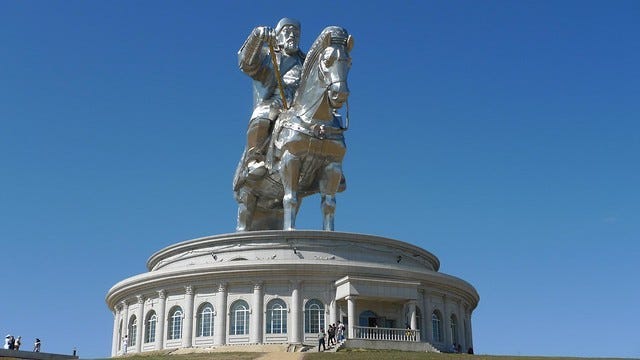
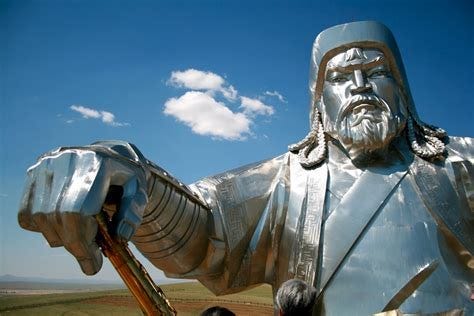
With a life like this, that seems straight out a movie, it becomes much easier to understand the deification of Chinggis Khan by the Mongol Nation. For all purposes, he built the Great Mongol Nation from the ground up. For the first time in history, the steppe witnessed unprecedented levels of peace, freedom, justice, and security. This helps us explain why Chinggis Khan is so important to every Mongol today. The establishment of Yeke Mongol Ulus by the Khan is something that all Mongols take pride in. He brought such glory to the Mongol State that no other nation can claim to do so. It is only natural for Chinggis Khan to become THE Central figure to the Mongol National Consciousness, embodying the spirit and identity of the entire Nation.
A heartfelt thank you to Batzorig Vaanchig, the renowned Mongolian singer, for graciously granting permission to use his likeness in this article. A link to his YouTube channel is here.



